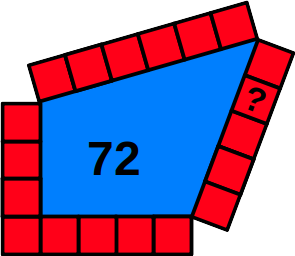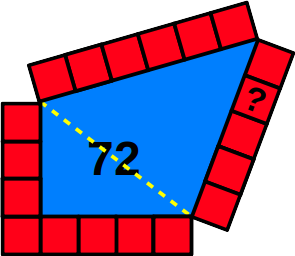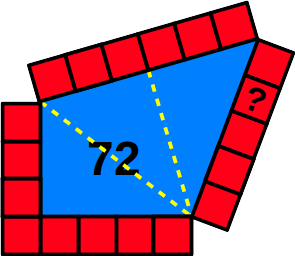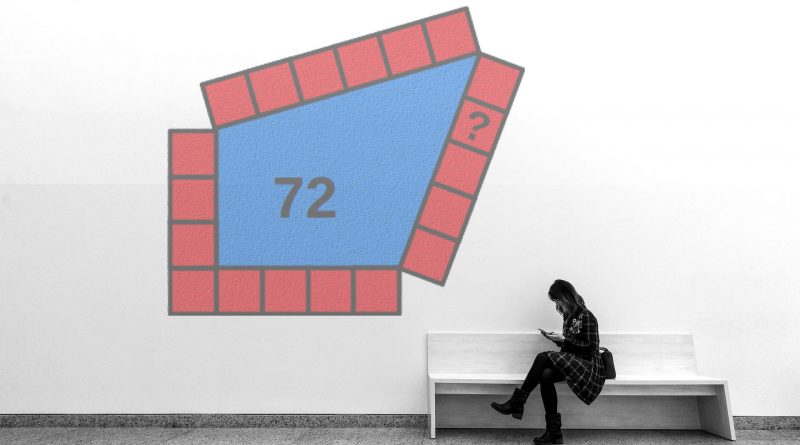Aesthetic Resolution
Have you ever thought about finding a math challenge at an art exhibition?
It may seem strange, maybe it would make more sense for this content to appear in a science museum, but in a space reserved for Art?
What would be “artistic” about a math challenge?
Believe me, this is really not an intuitive idea, and to better understand how it came about, I need to tell you a little about Unicamp’s Mathematics Challenges project. This project has been taking place since 2020, and consists of the publication, published by university social networks, of three math challenges per week. Mathematics contents usually have their productions aimed at curricular use, and in this work, this purpose was no different. The work itself emerged as a test of didactic material aimed at teaching fractions in the Final Years of Elementary School. Aesthetic choices at first were not considered, while the main focus was on the feasibility of this material to aid in the learning of fractions. However, what started as a test, had a strong reception from the university community, leading to its weekly realization. This, over time, brought space for more sophisticated challenges, which also began to determine a form and intention linked to its production.
The challenges in general are figures formed by geometric shapes of two or three dimensions, with numerical information associated with the length, area or volume, and an unknown to be determined. Accompanying the challenges is textual information that guarantees some of the more subjective visual relationships.
Throughout the first 262 challenges published, it was possible to observe some aesthetic appeals linked to the colors and arrangements of geometric shapes used. Some challenges were beautiful to look at, they had challenges that looked like flowers, others were more enigmatic and curious structures to observe. However, if we think from a mathematical point of view, the challenges carry a greater restriction than the usual artistic productions that use colors and geometric shapes, because while an artistic production can make any arrangement of colors and shapes to achieve the necessary aesthetics, these challenges are restricted to illustrating a single-solution mathematical problem.
However, a more intrinsic characteristic of the challenges appeared in the people who solved them. This was linked to a series of techniques, concepts, relationships, procedures or results achieved during or at the end of the resolution. It’s as if the process of solving can carry a certain aesthetic that makes a challenge admirable for some non-visual aspect. For example, after performing numerous calculations with fractions and roots, at the time of the result they cancel out, arriving at a Natural number. Or in the use of a concept or geometric relationship that makes it possible to solve an apparently complex challenge, in a very simple way. These are aspects that appear in the process of solving it, and which I believe, do carry a multifaceted aesthetic.
After this realization, I set myself to work on a challenge that I could carry in a more intentional way, this aesthetic linked to its resolution. Something that could be exposed and generate a feeling of satisfaction for those who solve it, not because it is a simple challenge, but because of the way it can be solved. To make it clearer what we’re talking about, let’s go to this artwork prototype.
The challenge below is made up of a blue quadrilateral with an area of 72 units and you are asked to determine the area of one of the 19 red squares.

Resolution 1:
Let’s call the side of each red square L.
We can imagine the blue region subdivided into a right triangle and another triangle.

The area of the right triangle will be given by (3L*4L)/2 = 6L².
The hypotenuse of the right triangle will be given by √[(3L)² + (4L)²] = 5L.
Heron’s formula allows us to calculate the area of the other triangle from its sides:
p = (5L + 5L + 6L)/2 = 16L/2 = 8L
Area = √[8L(8L – 5L)(8L – 5L)(8L – 6L)] = √[8L3L3L2L] = √[144L⁴] = 12L².
Adding the areas of the triangles we get the area of the blue region: 18L² = 72.
To get the area of a red square given by L², we make L² = 72/18 = 4.
Resolution 2:
Let’s call the side of each red square L.
We can imagine the blue region subdivided into a right triangle and another triangle.

Knowing that the hypotenuse has length 5L, we can imagine the other triangle, subdivided into two triangles congruent to the right triangle.

Adding the areas of the triangles we get the area of the blue region: 18L² = 72.
To get the area of a red square given by L², we make L² = 72/18 = 4.
What did you think of the challenge and its resolutions?
Did you see any “aesthetics” in them?
The aforementioned aesthetic resides so much in the sophisticated reasoning necessary to solve the challenge, since in general only with the knowledge of the sides of a quadrilateral, the calculation of its area can be indeterminable (there can be infinite 4-sided polygons with the same side measures from different areas). However, when we realize that after dividing it into a right triangle, this problem of infinite solutions has a unique solution, we now have two different ways to solve it: using Heron’s Formula or dividing it into two more triangles congruent to the right triangle. It is also interesting to note that the beginning and end of both resolutions are identical.
Along with the aesthetics of reasoning, we also have the reference to the known results of the Pythagorean Ternas (Natural numbers a, b, c greater than 0 with the characteristic that a² + b² = c²) and to Heron’s Formula present in Resolution 1.
There is, however, a geometric aesthetic, as we can see in Resolution 2, a quadrilateral until then without clear evidence, decomposing into three congruent triangles. This is a result that at first glance may seem distant, but after finding the hypotenuse of the first triangle, this relationship becomes “visible” in the image.
In addition to the aesthetics of reasoning and geometry, we also have a numerical aesthetic, which provides for performing calculations within the set of Natural numbers, that is, without obtaining results in the form of fractions or square roots (although the Pythagorean Theorem and the Heron’s formula use fractions and roots in their calculations).
Finally, there is a subtlety in the challenge regarding the perception that we should stop the calculation when we find the value of L², instead of continuing it to find out how much L is worth. chosen to be a Natural number), this value is the measure of the side of the red square rather than its area.
In short, these are characteristics linked to the resolution of the challenge that are somehow external to its visual representation. Whoever sees it, sees 20 quadrilaterals, but whoever solves it sees possibilities for sophisticated resolutions and simple calculations.
So, what do you think?
Does the aesthetics of solving a challenge seem to make up for the limitation of designing it for a single solution?
Write it in the comments :3

